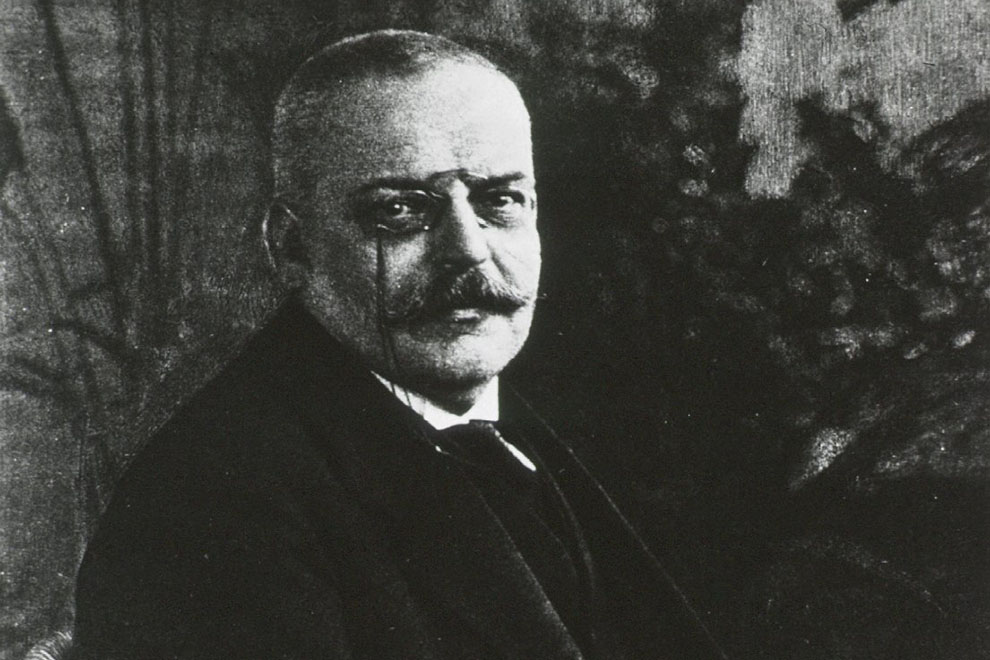The Alzheimer Conundrum: Entanglements of Dementia and Aging
By Margaret Lock | Princeton University Press | $45.95
In 1991, Allen Roses from Duke University discovered a genetic risk factor for dementia in older people, a gene called APOE. Despite a plethora of genetic research on dementia since that time, APOE remains the leading genetic risk factor for the most common cases of dementia worldwide. Yet this year the world’s leading scientific journal, Nature, pointed out that Roses’s discovery has been “largely criticised or ignored” and research in this area has dwindled. Roses says that he has received no grant funding to study APOE and dementia since his discovery. It appears that he and his gene have been squeezed out.
Last year, in a letter to the British Medical Journal, fifty-two doctors argued that four medical researchers, including me, were “in danger of being an affront to the millions of people with dementia and their families” and risked “undoing much of the good done over recent years.” This impressive number of clinicians was responding to our view that plans to screen for “pre-dementia” ignore the drawbacks of making an early diagnosis of a disease without a cure.
What do these two anecdotes have in common? In both cases, the central dogma of dementia research had been questioned and in both cases the mainstream research and medical fraternity sought to stamp this out. There is only room for one theory of dementia and that is “the amyloid cascade hypothesis.” Roses had erred by finding an important dementia gene that did not support that hypothesis. My colleagues and I had erred by writing a review commissioned by the British Medical Journal stating that screening for preclinical dementia based on the amyloid hypothesis is not useful and will lead to significant overdiagnosis of Alzheimer’s disease and over-medicalisation of ageing.
Why would the dementia research community uphold one theory with such fervour and exclude other views or questioning as heretical? Surely people involved with dementia research and healthcare would want to explore all possibilities, particularly since the problem is so important, the stakes so high and progress so painfully slow?
Enter the distinguished medical anthropologist Margaret Lock and her book The Alzheimer Conundrum. Lock, a McGill University sociology professor, has written several books that place the cultural, economic and social context of modern medicine and biotechnology under the microscope. When Lock applies her anthropological gaze to the problem of Alzheimer’s disease, the result is uncomfortable, captivating and unsettling. It should be absolutely compulsory reading for all people who deal with dementia.
Lock presents us with a rich tapestry of science, history, sociology and medicine, interwoven with transcripts of interviews with patients, carers and leading researchers in dementia and Alzheimer’s disease. The result is both knowledge and context, with context as the clear winner. In fact, any medical researcher or doctor would be wise to ask Lock to write a book about his or her chosen area before basing a career on what might turn out to be hubris and hope, or worse still, political and financial pressures. In this age of scientific supersubspecialisation, it is too easy to focus on, and believe in, the gene or the protein or the chemical – and totally overlook the wood for the trees.
Lock introduces her deconstruction by placing dementia research in the context of three broad and overarching tensions: brain versus mind; normal ageing versus pathology and disease; and genetic versus environmental causes of disease. Then she rapidly focuses on the central role of the amyloid hypothesis in directing, and perhaps stifling, research into dementia and Alzheimer’s. It’s important to be clear about the terminology here. To the layperson, dementia is easily recognised as confusion and forgetfulness in an older person. But according to the most recent set of definitions, it is possible to be perfectly normal and still be given a dementia diagnosis on the basis of new tests of unproven accuracy or predictive ability. Alzheimer’s disease has come to be regarded as the commonest cause of dementia.
The first case of Alzheimer’s disease was described by the neuropathologist Alois Alzheimer in 1906. He recorded the clinical features and brain pathology of Auguste Deter, a woman in her fifties who had died of dementia. Australian scientists have very recently obtained tissue from the slides that Alzheimer used and found that Deter’s early-onset dementia was caused by a very rare genetic condition. Alzheimer found microscopic plaques in her brain that contain an unusual protein called amyloid protein (an oxymoronic phrase because amyloid means starch-like, and proteins are not starch). These amyloid plaques are also very common in the brains of people as they get older, which is why the diagnosis of Alzheimer’s disease is now given to most older people with dementia.
Unfortunately, as Lock points out, the association between the symptoms of dementia and the presence of amyloid plaques in older people is not very convincing. Amyloid plaques and genes might well cause dementia in younger people, but in old people the causation doesn’t seem to hold. Lots of older people with amyloid plaques in their brains are perfectly normal and don’t develop dementia, and lots of older people with dementia don’t have amyloid plaques. Or if they do, these are often mixed up with other pathological changes, including those associated with ageing. Although there are said to be thirty-five million people with dementia worldwide, genetic causes only appear to apply in a few hundred families, and they are usually related to the genes associated with amyloid.
In other words, dementia is overwhelmingly a problem among older people yet the research has been dominated by the genes that cause dementia in young people. Perhaps this is a type of ageism? Or perhaps studying the ageing process is just too hard.
Since 1991, when it was first published by John Hardy and David Allsop, the amyloid cascade hypothesis has held dementia research in an iron grip. On the basis of the genetic causes of dementia in young people, the two neuroscientists concluded that most dementia is caused by Alzheimer’s disease, which in turn is caused by amyloid plaques building up and killing nerve cells. If correct, the implications of this hypothesis are immense. If we can detect amyloid in the brain then we can detect dementia early enough to prevent it from progressing. And if we can remove the amyloid with antibodies or vaccinations or enzyme blockers, then we can prevent or even cure dementia.
Unfortunately, all clinical trials using treatments aimed at amyloid have failed. It has been pointed out recently that over one hundred clinical trials at a cost of over $50 billion in dementia have failed to show that any amyloid-based treatment has any effects. (This is all the more remarkable because by simple probability we would expect at least some of the one hundred trials to reach statistical significance.) Proponents now argue that we just need to give the treatments earlier, so trials are being commenced in those rare families with genetic causes of Alzheimer’s disease.
The need to diagnose dementia earlier so that we can start treatment earlier generates another commercial opportunity – testing to detect the presence of amyloid in normal people and/or for genetic variability that causes or predisposes to dementia. The latest imaging tests are claimed to detect dementia nearly twenty years before the onset of symptoms, and the only reason the tests aren’t too accurate, it’s claimed, is that many people will die before they develop dementia.
There’s a bigger question, of course. What is the purpose of performing screening tests to see whether people are at risk of developing dementia when there are no effective interventions? The usual response is that people want to know and be able to plan for the future. Lock responds with a quote from the anthropologist E.E. Evans-Pritchard’s book Witchcraft, Oracles and Magic among the Azande: “when the oracles announce that a man will fall sick… his condition is therefore already bad, his future is already part of him.” A positive test means you go from being normal to being someone who will develop dementia – your future becomes your present. Yet we all face the prospect of dementia and frailty if we live long enough.
Another mantra of dementia research is that “dementia is not a part of normal ageing.” Lock shows that this statement is more political than it seems. It reaches into a semantic battle between those people who believe that diseases are separate entities and old people are just unlucky to have several at the same time, and those who believe there is a definable biology of ageing that underpins many of the problems that occur with ageing. Proponents of this latter concept believe in the “longevity dividend,” whereby strategies to delay ageing will also delay a whole suite of age-related diseases and disabilities. Ignoring the role of ageing in dementia is equivalent to ignoring the role of tobacco in lung cancer.
Perhaps the amyloid hypothesis will be judged more favourably in time. It will just take one successful therapy to convert those who have tenaciously supported and defended the amyloid hypothesis into heroes. Meanwhile, as Lock points out, we already have promising approaches to reduce dementia – they just don’t have the commercial potential of amyloid-based treatments. Patients, after all, are customers too.
Lock concludes that “emerging knowledge in both epigenetics and epidemiology” strongly suggests that we should take “a public health approach, including lifestyle changes, reduced exposure to toxins, reductions in poverty, increased community support, and other variables…” This is likely, she argues, “to reduce the prevalence of dementia worldwide to a much greater extent than would an approach confined to expensive molecular micro-medical management of segments of those populations deemed to be at risk that happen to be located in wealthier countries.” In fact, one of the first studies to show that physical exercise was an effective intervention was carried out by Australian scientists. And only now, after two decades of failed amyloid therapies, are serious, large-scale studies of interventions that target lifestyle and vascular risks being embarked on internationally.
The Alzheimer Conundrum reminds us about the real needs and lives of people with dementia and their carers. It asks whether research into Alzheimer’s disease, the amyloid hypothesis and genetic causes of dementia are truly cutting-edge, paradigm-shifting science or simply seductive hype with political clout that captures the public imagination and capital investment. While this attention means that funds are increasingly being directed to dementia research and care, the hype risks minimising and sidelining the elephants in the room: the role of ageing in dementia, the role of lifestyle interventions to delay dementia, and the pressing healthcare needs of people with dementia and associated multimorbidity, behavioural disturbances and carer stress. Lock reminds (and perhaps chastises) all of us involved in healthcare and medical research, no matter what the disease might be, that we should always make the science follow the needs of the patient, not vice versa. •




